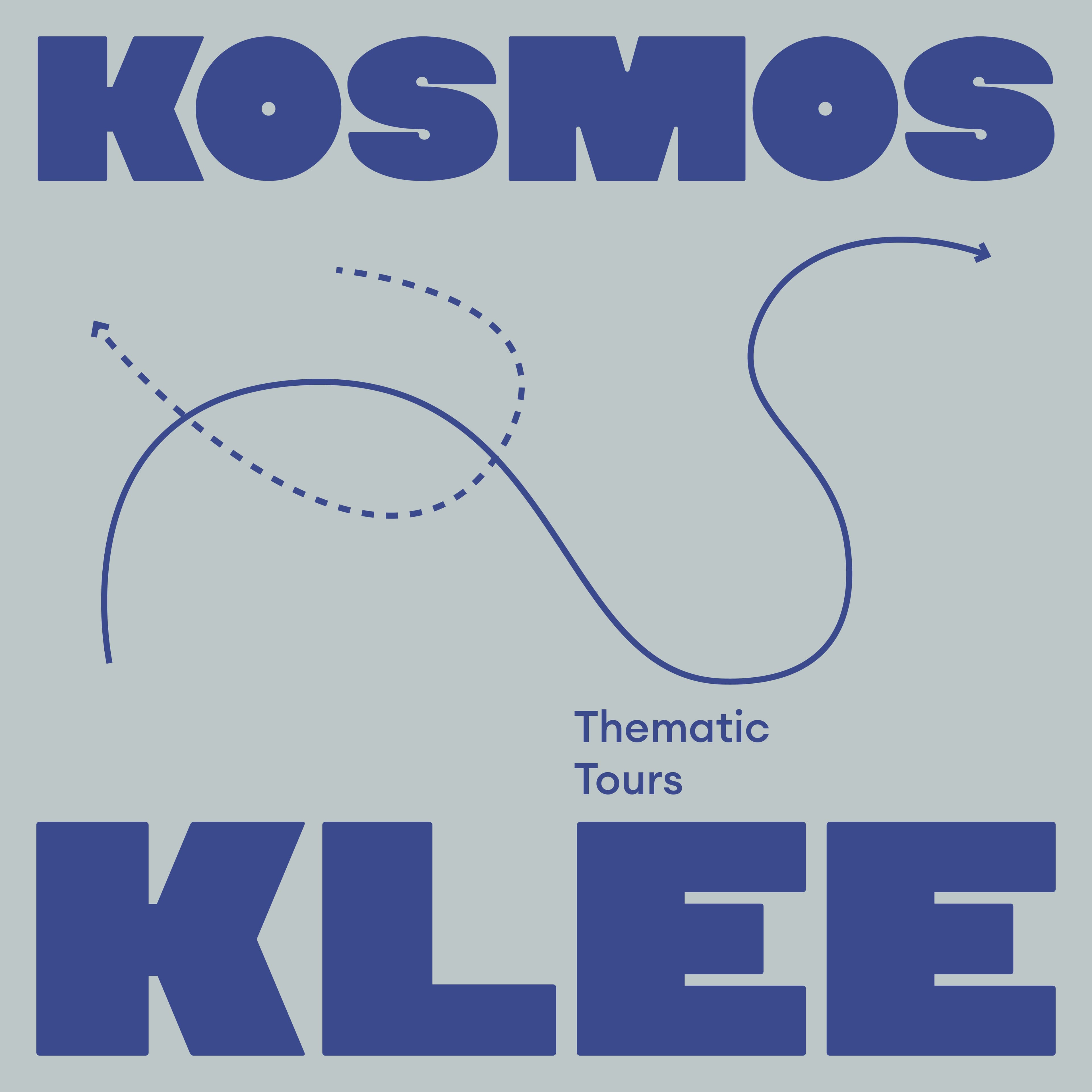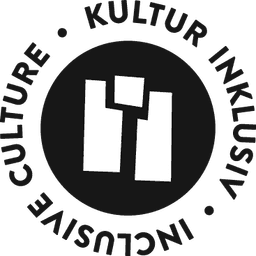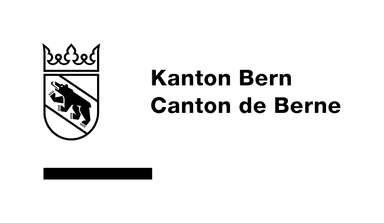
Discover various themes from Paul Klee’s life and work with our Digital Guide. Klee addressed these themes throughout his artistic career, which lasted about 40 years. Our thematic tours not only reveal Klee’s deep and questioning exploration of each theme. They also show that Klee’s view of a subject and how he depicted it continually evolved.
The works in the tours are marked with the symbol:

Nature as a Model
The preoccupation with nature is perhaps the most important theme in Paul Klee’s work. He turned to nature as a subject for his art but went much further than that. In studying nature, he discovered structures and processes that he incorporated into his pictorial language. Klee’s working methods were also inspired by nature: he produced his works step by step, as if they were growing naturally. And finally, Klee saw himself as a creator who brought new worlds into being – just like natural processes.
Movement as the Norm
Beginning in the 1910s, Paul Klee explored aspects of movement and change as well as forces and energies. For him, movement was the norm in human life and in existence as a whole. The theme of movement is closely related to Klee’s engagement with nature (in the form of growth and metamorphoses, for example). For a painter and draftsman, it is a challenge to convey movement in a still image. For about 30 years, Klee studied how the illusion of movement can be conveyed through pictorial means. And he arrived at simple yet fascinating solutions.
Discovery of Colour
For a long time, Klee had a hard time with colour. During his training in Munich around 1900, he referred to oil painting as the “oil-rich brush goddess” with whom he could not get along. It was not until ten years later that this changed, and Klee gradually began to gain confidence in his use of colour. Klee’s colour combinations are often based on widely known colour theories and design principles, such as the colour wheel or the colour sphere. Klee often used colour intuitively and to reinforce messages.
Not a Day without a Line
Paul Klee’s talent for drawing was already evident in his youth. Drawing and especially line would play a predominant role in his work for the rest of his life. Even after he had become confident in his use of colour, he often returned to the clarity and precision of line. For Klee, line was much more than a means to describe forms and figures. Using different lines, he tried to reinforce or support certain aspects of a subject or theme.
Commentary on current Events
Paul Klee is often perceived as a withdrawn, introverted artist. At first glance, his colourful fantasy worlds would seem to confirm this. However, Klee closely observed current events and the innovations and developments of his time. His early works refer to specific events and people. Later, he increasingly distanced himself from this approach, ultimately viewing more general aspects of existence from afar.
Space and Architecture
“All I see is architecture, rhythmic lines, rhythmic surfaces.”
Paul Klee (1902)
Throughout his career, Paul Klee explored the subject of architecture in a variety of ways. Early on, he recognized the “principles of form,” the structure, and the “exact organism” of this discipline. Klee was convinced that, like nature, architecture was based on the universal principles of design that also produce living organisms. Building upon these ideas, Klee depicted carefully composed edifices as well as architectural fantasies. He painted buildings that unfold in a Cubist manner and illusions of spatial depth. The artist was familiar with the traditional methods for rendering architecture and space on a two-dimensional surface. At the same time, Klee was interested in dissolving conventional modes of representation, as seen in Cubism, the experimental photography of his time, and abstract painting.
Biography Paul Klee
 1879 Paul Klee is born in Münchenbuchsee near Bern on December 18 to the music teacher Hans Wilhelm Klee (1849 – 1940) and the singer Ida Maria Frick (1855 – 1921).
1879 Paul Klee is born in Münchenbuchsee near Bern on December 18 to the music teacher Hans Wilhelm Klee (1849 – 1940) and the singer Ida Maria Frick (1855 – 1921).
1898 After completing his secondary education, he wavers between pursuing a career as a musician or a painter. After some time, he decides to go to Munich, where he attends Heinrich Knirr’s private drawing school.
1899 Klee meets his future wife, the pianist Lily Stumpf (1876 – 1946).
1900 After five months, he breaks off his painting studies with Franz von Stuck at the Munich Academy.
1901 In July, Klee returns to his parents’ home in Bern.
1901/1902 He and the Bern sculptor Hermann Haller leave for a six-month study trip through Italy. In the face of ancient and Renaissance art, Klee experiences an artistic crisis.
1902 – 1906 To undertake his course of independent study, Klee retreats to his parents’ home in Bern. There he makes his first reverse glass paintings and etchings.
1906 On September 15, he marries Lily Stumpf in Bern. Two weeks later, the couple moves to Munich.
1907 Their son Felix is born on November 30.
1911 Klee meets the artists of the Blue Rider – August Macke, Gabriele Münter, Wassily Kandinsky, Marianne von Werefkin, Alexej Jawlensky, and later also Franz Marc.
1912 He shows 17 works in the second Blue Rider exhibition in Munich. In April, he travels to Paris, sees Cubist work, and visits the artists Robert and Sonia Delaunay.
1914 In April, Klee travels to Tunisia with his artist friends August Macke and Louis Moilliet. The journey validates the tendency toward abstraction and the treatment of colour that he discovered in Paris, and he explores them further.
1916 On March 11, he is drafted into the German army as a soldier. After his training in the infantry, he is transferred to the maintenance company of the air corps in Schleissheim near Munich and afterward to Gersthofen. He is still able to pursue his artistic work.
1916 – 1918 He becomes a cult figure of the new art scene in Germany following his exhibitions at the Berlin gallery Der Sturm.
1920 Klee’s art dealer Hans Goltz organizes his first retrospective in Munich with 362 artworks. The first monographs on Klee are published. On October 29, Walter Gropius appoints Klee to the Bauhaus in Weimar.
1921 On May 13, Klee begins his academic teaching career at the Bauhaus and moves with his family from Munich to Weimar.
1923 Klee’s first exhibition at a German museum takes place at the Kronprinzen-Palais, part of the Nationalgalerie in Berlin.
1924 The art dealer Galka Scheyer founds the artists’ group the Blue Four with Wassily Kandinsky, Lyonel Feininger, Alexej Jawlensky, and Paul Klee, in an attempt to promote them in the United States.
1925 The Bauhaus moves to Dessau. Klee participates in the first Surrealist exhibition, La peinture surréaliste, in Paris, together with Max Ernst, Joan Miró, Pablo Picasso, and others.
1926 Klee and his family move to Dessau. There they live with Wassily and Nina Kandinsky in one of the three duplexes built by Gropius for Bauhaus masters.
1928 Klee travels to Egypt. The hieroglyphics and the Nile landscape make the strongest impression on his work.
1929 To celebrate Klee’s 50th birthday, exhibitions take place in cities such as Berlin, Dresden, New York, and Paris, as well as at the Museum of Modern Art in New York.
1931 Klee leaves the Bauhaus and takes up a professorship at the Düsseldorf Academy.
1933 Under pressure from the National Socialists, Klee is dismissed from his teaching position. At the end of the year, he leaves Germany with his wife and returns to his hometown of Bern.
1935 Klee exhibits the first signs of a severe illness (scleroderma).
1936 Due to his poor health, Klee’s artistic output decreases to an all-time low.
1937 The National Socialists defame Klee’s art as “degenerate” and seize 102 of his works from German museums. Of these, 15 are presented in the exhibition Degenerate Art.
1939 Despite his health limitations, Klee’s productivity reaches its peak, with 1,253 works.
1940 On June 29, Paul Klee dies in Locarno-Muralto. His application for naturalization was to be approved on July 5.
Imprint
Digital Guide
Implemantation: Netnode AG
Project: Dominik Imhof
The Zentrum Paul Klee is barrier-free and offers inclusive events.

With the support of



ZENTRUM PAUL KLEE
Monument im Fruchtland 3, CH-3006 Bern
T +41 (0)31 359 01 01
info@zpk.org
zpk.org